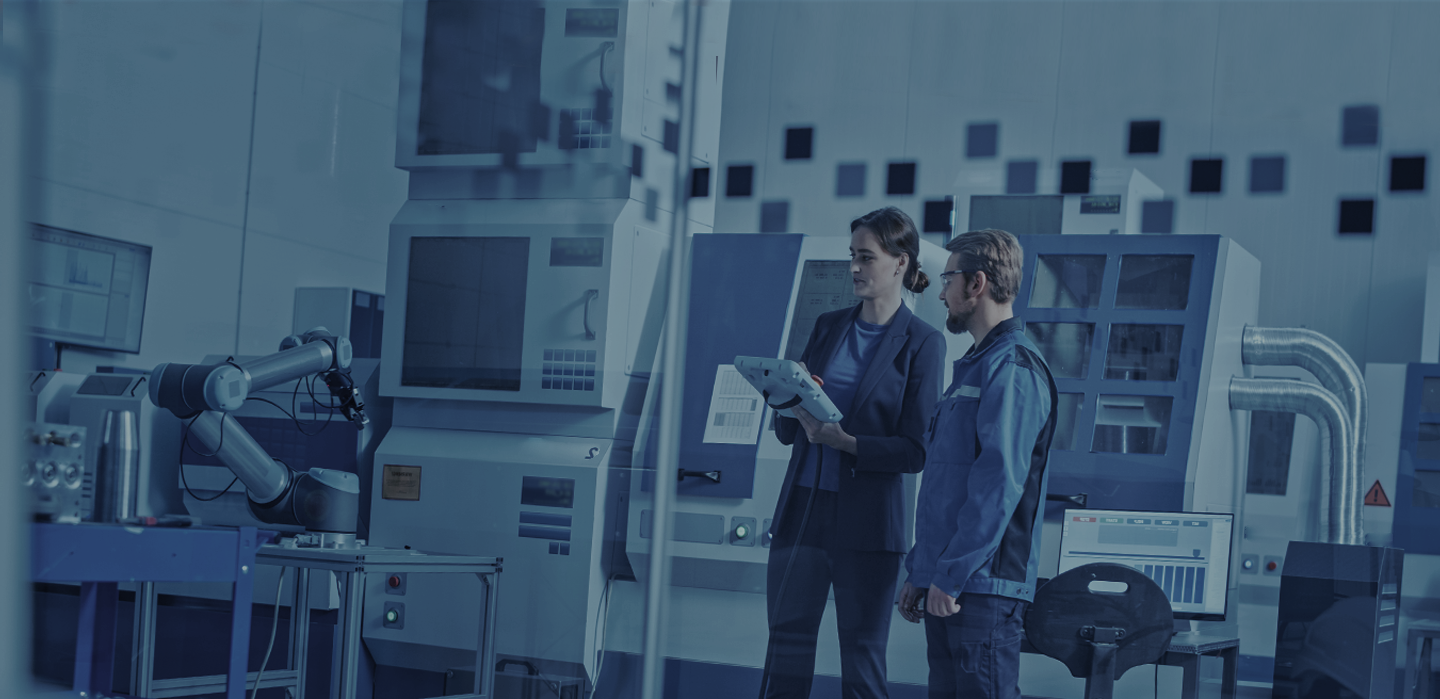
Asset Performance Management (APM) is the process of gathering metrics from machines on the production floor and factory, in order to analyze and visualize the performance of manufacturing processes. These metrics are then used to find and solve areas of inefficiency throughout the entire manufacturing facility.
The ability to understand machine performance in order to optimize efficiency has become a vital competitive tool. APM provides this by delivering a flow of real-time data to give a snapshot of the efficiency of the manufacturing operation at any given time.
Asset Performance Management is enabled through three distinct steps:
Once data has been collected, analyzed and visualized, bottlenecks and inefficiencies can be identified and the necessary operational changes implemented to improve and optimize existing manufacturing procedures and performance.
The first step in executing APM is extracting data from the machines. However, this is not such a simple process. In fact, the inability to extract usable data from machines is the major barrier blocking the implementation of APM within the manufacturing industry.
Every manufacturing facility has a mix of multiple machines ranging in age, make and model. These machines are generally not equipped to record the data needed for Asset Performance Management. Even for those machines that do offer the ability to extract data, the diversity of makes and models means any data retrieved would need to be standardised before any analysis could be conducted.
The result is that manufacturers have very few, if any, reliable data points to use to analyze the performance of their facility, machines and processes.
Manufacturing facilities can, however, successfully record data to profile their operations in a variety of ways. Recording existing production measurements manually, such as the number of units being produced per day, the number of machine up-time hours per day, and the number of employee hours per day, using paper reports and spreadsheets is an option, although time-consuming and inefficient. This method will also mean your decisions are based on dated information, robbing you of the ability to quickly adjust to changes in demand or respond to unexpected problems occurring on the shop floor.

Rather than rely on the manual collection of data, additional hardware can be installed, either invasively in a machine, or non-invasively on or near a machine, to automate the transfer of data to help generate data and insights.
Installing hardware inside a machine should, however, be approached with caution. It is highly invasive, incredibly complicated to install and creates a significant risk to the integrity of a machine. Since it involves installing a non-native piece of hardware it requires the rewiring of the machine and runs the risk of damage during installation. Tampering with machines could also void any existing warranty covering issues that may occur in the future, even if the issue being experienced is in no way related to the hardware installation.
There is an alternative method, which offers the benefits of using hardware to unlock data from machines without compromising their integrity. Installing hardware sensors on the machine (rather than in the machine), is a much safer option, as it is not invasive.
The sensors are not physically connected to the inside of the machine itself, but are located on or near the machine. The sensors then utilize advanced analytics to translate these signals into actionable data that can be used for Asset Performance Management.
Regardless of the method of collection, once machine data has been gathered, it can be used to improve through the calculation and optimization of the facility’s Overall Equipment Effectiveness (OEE). Overall Equipment Effectiveness is a method of determining precisely how efficient and effective your facility is, and is calculated by multiplying Availability (A) by Performance (P) by Quality (Q).
OEE Availability is the percentage of time each machine is actually performing manufacturing tasks. Every moment of downtime, regardless of the reason, negatively impacts the availability scoring.
OEE Performance is the expected production per hour. If a given machine can create one unit every 30 minutes, we would expect that machine to create 48 pieces every 24 hours. If the actual number is lower than 48, it indicates that the machine is not operating at full capacity.
Finally, OEE Quality is the number of units that are actually produced, subtracting any defective pieces from the total. So, if the machine creates 48 pieces per day, but 24 units are defective, even though the performance scoring will be high, the low-quality scoring will negatively impact the overall OEE score.
Once the OEE has been calculated, it’s possible to identify problem areas that can be improved. This, however, won’t provide clarification as to the root of the problem. That’s where Asset Performance Management comes in by pinpointing the specific causes for reductions in efficiency, providing manufacturers with actionable information to solve them.
Take, for example, a hypothetical manufacturing facility that has consistently low scores in availability and performance. Those metrics alone will not help increase efficiency. However, if the floor manager has data that highlighted machines that were running at reduced capacity and that maintenance downtime was a constant issue, it would provide real and tangible ways to improve the OEE score to boost overall efficiency.
Through the calculation of the OEE score, manufacturers are actually gaining visibility over their entire facility to better understand their ability to improve efficiency in every aspect of the manufacturing process. The Asset Performance Management system shines a light on those data points and brings them to life by providing tangible areas of improvement within the facility.
APM systems don’t just highlight areas that need to be improved, they also enable the visualization of the associated data into graphs, charts and tables. Visualization of data in this way empowers managers to quickly and easily keep track of their OEE and dig deeper into any potential problem areas without going through the time-consuming process of pouring through data and reports.
Once facility data has been collected, standardized, and interpreted, it’s important to be able to share that data with other systems, such as Enterprise Resource Planning (ERP) or Customer Relationship Management (CRM), to enable complete visibility for the entire team. APMs will allow for the seamless integration through an API to both CRMs and ERPs, providing the added visibility needed to improve efficiency in the facility’s non-production areas.
Through the use of ERP integrations and real-time production measurements, manufacturers will be able to improve planning to prevent delays and provide customers with more accurate lead times. This empowers managers to proactively prevent issues before they occur, while ensuring solutions implemented in one area will not create problems in another.
Facility data integrated into a CRM also offers the ability to update customers on their orders’ status in real-time. Suppose it appears that a delivery window is going to be missed or a shipment will be ready ahead of schedule. In that case, representatives can proactively inform the customer and ensure high levels of satisfaction in either scenario.
While OEE has become the gold standard for assessing a manufacturing facility’s level of efficiency and productivity, Asset Performance Management is now essential to truly understand, improve, and optimize a manufacturer’s OEE score.
Without a comprehensive APM system to give context to an OEE score, manufacturers are left to use guesswork on how to improve their facility’s efficiency.
However, while the importance of APM is nowadays widely recognized as an absolute necessity in optimizing performance, its implementation is still hard to achieve.
The implementation of non-invasive sensors offers a quick and simple solution to harvest data from any machine regardless of age, make and model. This enables APM to be introduced into an entire factory within days, and allows managers to quickly identify bottlenecks and respond quickly in order to improve OEE and productivity. This has become a competitive edge few manufacturing companies can survive without.